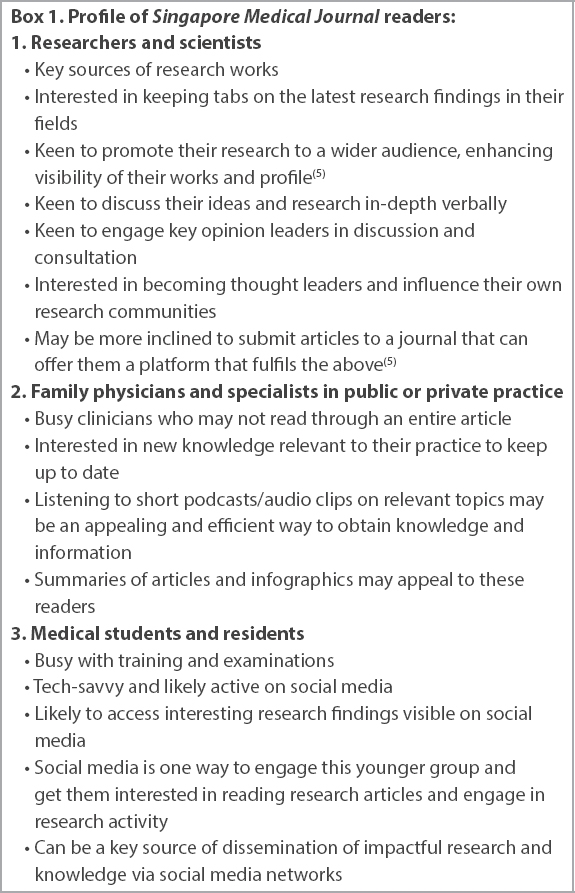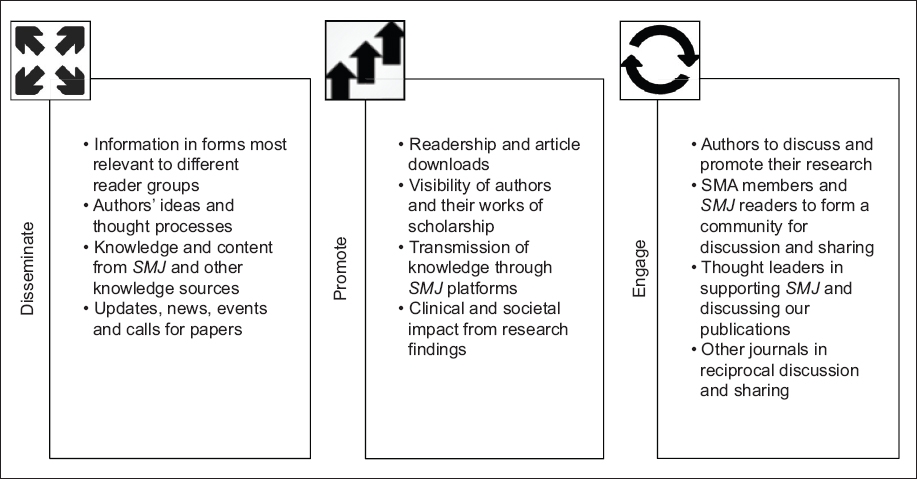Social media is now a ubiquitous channel for information dissemination, including the dissemination of scientific knowledge. Journals are increasingly tapping on social media platforms as novel channels for dissemination, unbridling the works of scholarship previously bound within their covers.(1) From antiquity till before the information revolution, knowledge was transmitted via one of two means – verbal communication and written or printed material. From the 1990s, a new channel of knowledge distribution was created – the Internet, which rapidly transformed knowledge dissemination.
It is not hyperbole to suggest that most of us have been accessing scientific articles in soft copy via the Internet for the past decade or so. Fast forward to today, and the Internet has penetrated further into our lives through social media, affording journals new channels to reach out to readers in ways previously never thought possible.
When we examine the fundamental functions of scientific journals, they are to provide a platform for researchers to share their research findings with others and for readers to obtain the most current knowledge.(2) On our journal’s website, it is written: “The Journal aims to advance medical practice and clinical research by publishing high-quality articles that add to the clinical knowledge of physicians in Singapore and worldwide”.
While the Internet brings challenges, as detailed in a previous editorial, it also brings opportunities.(3) The Editorial Board believes that it is important for the Singapore Medical Journal to move with the times.(4) In line with advancing the journal’s mission, we have drawn up several social media strategies to disseminate research works published in our journal, engage readers more actively and add value to authors who have chosen to publish with us. We began with our readers in mind, and then built the profiles of our readers (
Box 1
Profile of Singapore Medical Journal readers:

Based on the above reader profiles and the journal’s functions, we have crafted our social media strategies (
Fig. 1
Diagram shows the social media strategy for the Singapore Medical Journal (SMJ). SMA: Singapore Medical Association

We are excited by the prospects of enhancing the reach and functions of the journal, and look forward to interacting with you on Twitter, Facebook and LinkedIn. We hope you will support the journal by following us on these social media platforms, and sharing, forwarding and discussing published articles on the platforms.


